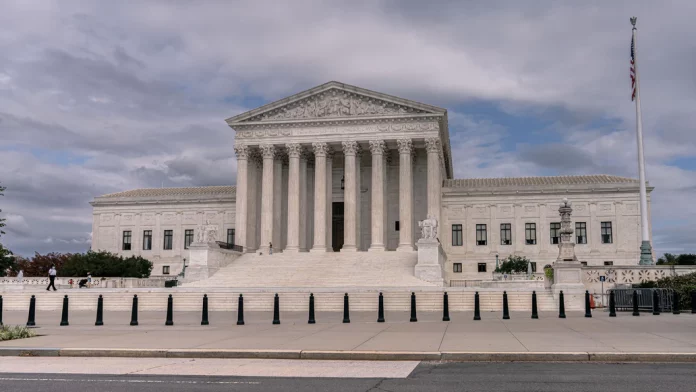
Supreme Court Justices Sonia Sotomayor and Amy Coney Barrett criticized discrepancies between federal district courts’ sentencing in a statement on Monday.
But fixing sentencing inconsistencies between federal courts can’t happen with the current state of the U.S. Sentencing Commission, and that’s a problem, the justices said.
In a miscellaneous orders list released on Jan. 10, Justice Sotomayor, joined by Justice Barrett, wrote that she respected the denial of certiorari in the case Guerrant v. U.S., but that it raised legal issues over different definitions adopted by circuit courts for a “controlled substance offense,” resulting in different federal sentencing between districts.
The conservative and liberal justices came together in the statement to address “a split among the Courts of Appeals over the proper definition of a ‘controlled substance offense,’ and, accordingly, over which defendants qualify as career offenders.” Some circuit courts have turned to federal definitions while others, including the 10th Circuit, have looked to state law to define a controlled substance offense, Justice Sotomayor wrote.
The justices tasked the U.S. Sentencing Commission, a federal agency within the judicial branch, with solving the discrepancies “to address this division to ensure fair and uniform application of the guidelines.”
Fixing the sentencing gaps, though, requires a full quorum of voting members at the U.S. Sentencing Commission, which it hasn’t had in over three years, Justice Sotomayor pointed out. Without a full quorum, the federal sentencing agency lacks teeth to make changes called for by the Supreme Court justices, or any other changes, until the White House and Congress approve more commissioners.
Guerrant v. U.S hailed from the 4th Circuit Court. Thomas Guerrant pleaded guilty to felony heroin distribution in the U.S. District Court for the Western District of Virginia and was sentenced to 120 months in prison. The district court deemed him a career offender based on a prior state felony conviction for possession of marijuana with intent to distribute, which the 4th Circuit Court of Appeals affirmed without holding oral arguments.
At the 4th Circuit, Guerrant argued that the Virginia law at the time of his marijuana conviction in 2018 had a broader definition of marijuana than federal law under the Controlled Substances Act. Guerrant argued that he was convicted of an offense with parts of the marijuana plant not mentioned in the CSA, so under the CSA the 2018 crime would not have counted as a “controlled substance offense” and the district court would not have applied the career offender sentence enhancer.
While the U.S. Supreme Court declined to hear Guerrant’s appeal, Justices Sotomayor and Barrett believed the case flagged sentencing inconsistencies at federal courts across the country with “direct and severe consequences” for defendants.
Colorado is one state where federal defendants face longer sentences based on the 10th Circuit’s 2021 decision in U.S. v. Jones. In Jones, the 10th Circuit decided the U.S. Sentencing Commission intended to define “controlled substance offense” to include illegal substances under state law that are not included in the CSA. The 4th, 10th, 7th and 8th Circuits have all issued similar rulings.
In contrast, the 2nd and 9th Circuits have used federal law and the CSA to define “controlled substance offense,” meaning defendants aren’t subject to the same sentence enhancers for certain state illegal substances. “The First and Fifth Circuits have not directly resolved the question, but have indicated agreement with this [CSA] approach,” wrote Justice Sotomayor.
In March 2021, Justice Sotomayor, joined by Justice Neil Gorsuch, called on the U.S. Sentencing Commission to address a different sentencing gap between federal circuit courts. “The Sentencing Commission lacked a quorum of voting members then, and it still does today,” Justice Sotomayor wrote in Monday’s statement. “I hope in the near future the Commission will be able to resume its important function in our criminal justice system.”
The U.S. Sentencing Commission was created in 1984 to address federal sentencing disparities. It monitors federal sentencing data and provides guidelines to federal courts.
The full commission has six members appointed by the president and confirmed by the Senate to six-year terms. The commission has only one active commissioner, Senior U.S. District Court Judge Charles Breyer, the brother of Justice Stephen Breyer, and two ex-officio commissioners.
In a press release acknowledging the statement, Breyer said he shares the justices’ sentiment and urged Pres. Joe Biden and the Senate to confirm a full quorum to “allow the commission to resume its important statutory function of updating the guidelines to address new policies, circuit conflicts and changes in laws.”
Breyer said the lack of commissioners is “particularly frustrating” since the department hasn’t been able to implement compassionate release guidelines created by the First Step Act of 2018.

